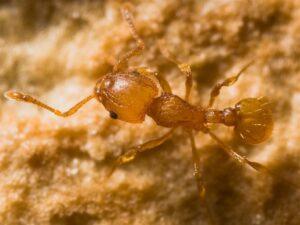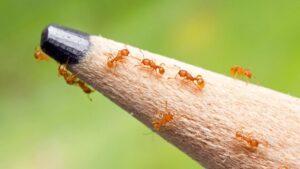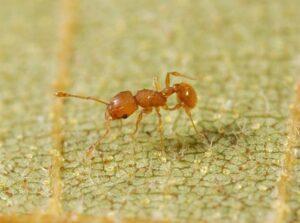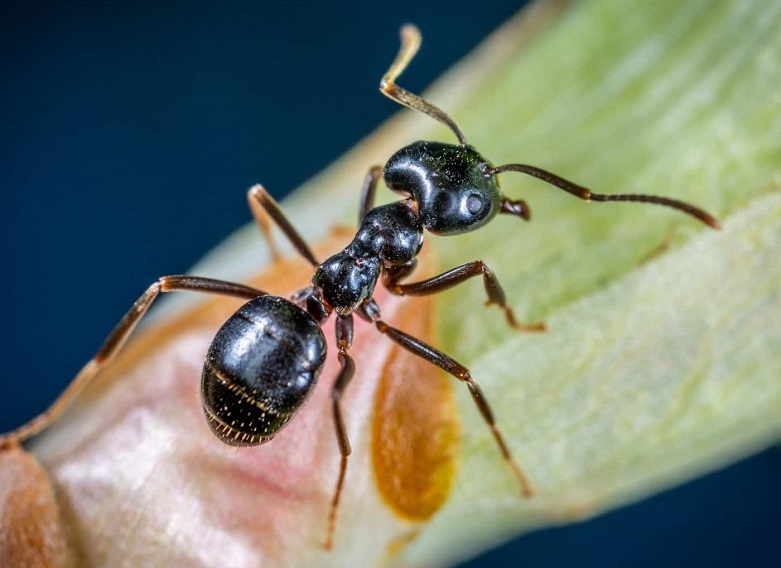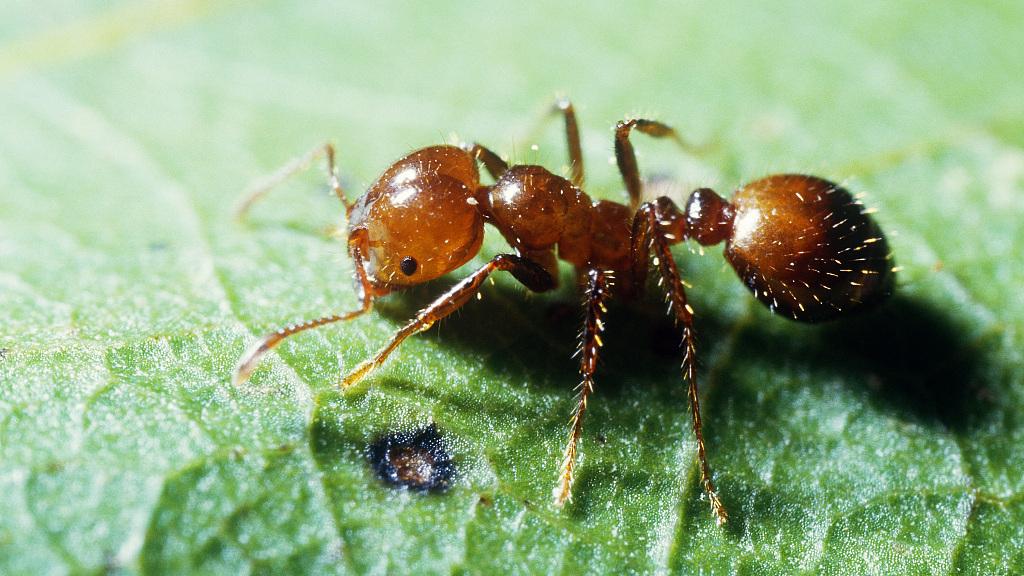Electric Ant (Wasmannia auropunctata)
Updated on
17/11/2022The Electric ant is a small invasive species of ants native to South and Central America. Despite its small size, it delivers a painful sting, earning it its other name- little fire ant.
Scientific Classification
- Class:Insecta
- Order:Hymenoptera
- Family:Formicidae
- Subfamily:Myrmicinae
- Genus: Wasmannia
- Species:Wasmannia auropunctata
Conservation Status
Description
They are small or medium-sized measuring 0.04-0.06inches (1-1.5mm). The different castes in their colony are monomorphic as there are no physical differences between them.
They have a golden-brown exoskeleton covered with long hairs.
Their antennae are 11 segmented. The last couple segments of the antennae are enlarged to form a distinctly shaped club.
The electric ant has a thorax with two backward-pointing spines. The bulge of the abdomen is separated from the thorax by a narrow waist, consisting of two small segments.
Distribution: Native: South and Central America; Invasive: Africa including the countries of Cameroon, and Gabon; North America, Puerto Rico, Cuba Israel, the six Pacific Island groups , namely – New Caledonia, Galapagos Island, Hawaii, Solomon Islands, and the northeastern parts of Australia, mainly Cairns
Habitat: Outdoors: under plant litter and rocks. Indoors: Furniture, clothing, bedding, wall cavities.
Do They Bite: Yes. Their sting is also excruciatingly painful.
Lifespan: Queens: 12 months. Males: several weeks. Workers: more than 40 days.
Predators: Spiders, armadillos, birds, antlions, and horned lizards.
Behavior and Characteristics
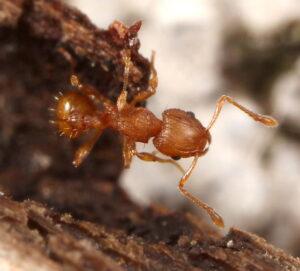
Electric ants’ natural diet consists of honeydew secreted by aphids and scales. They obtain protein by feeding on dead and living arthropods. They also consume decaying vegetation, seeds, and plants.
In search of food, electric ants trail along sidewalks and walls near buildings. Inside homes, ant trails form along baseboards and kitchens.
The worker ants move about slowly, i.e., their presence is undetected until they sting someone. They are rarely aggressive and will sting only when someone steps on them.
Their sting can cause pain ranging from mild to severe swelling that may last for many days.
Invasive ants cannot survive in colder climates and prefer warmer regions. Little fire ants of colder regions like England and Canada survive by nesting inside human establishments like greenhouses.
Colony movement is spiked after a heavy rainstorm or through human activity with the movement of plants, plant products, or edible material. Upon establishing their colonies, these ants may travel to a range of about 170 m every year.
Life Cycle
Several reproductive mechanisms – sexual and asexual- occur during electric ants’ reproduction.
The queen ant passes on its gene to produce baby queen ants through a particular form of asexual reproduction called parthenogenesis. Here growth and development of embryos occur inside the queen without fertilization.
Sexual reproduction involves eggs getting fertilized by males, which later develop into sterile workers. These workers have disease-resistant strong characteristics inherited sexually.
In some cases, during zygote formation, the female genetic material gets wholly erased. This process gives birth to males carrying on their complete male parent gene pool. This phenomenon of complete separation of the gene pool was first identified in this particular species.
The queen can lay up to 70 eggs in a day which remain incubated for 8-10 days.
After hatching, the larvae development takes a couple of weeks. The nymphal stage lasts for 13-14 days before they transform into adults.
Comparison With Similar Species
| Electric Ant | Coastal Brown Ant | Pennant Ant | |
|---|---|---|---|
| Sting | Has an excruciating sting | Sting humans, that does not cause discomfort | Stings humans occasionally |
| Size | Small; around 1/16 inches | Small; around 1/16 inches | Slightly bigger; around 5/32 inches |
| Appearance | Golden-brown body covered with small hairs | Yellowish-brown or reddish-brown to completely black body | Medium-sized, reddish-headed ant |
| Common Infestation Sites | Furniture, clothing, bedding, wall cavities | Lawns, flowerbeds, under bricks, cement slabs, flower pots, along the base of structures, and walkways, | Inside houses, shaded structures, greenhouses; under stones and logs. |
| Damage Caused | Sting humans and domesticated animals, causing decline amongst native ant populations | Destabilizing brick pavements, excavating roots of garden plants and lawns, causing oil dehydration | Eradication of Pisonia grandis trees, and important seabird nesting sites. |
As an Invasive Species and Its Impacts
Electric ants are a significant social, economic and environmental problem.
In Brazil, Florida, and on Pacific islands, they commonly live inside houses and sting residents. People are also stung in their swimming pools by ants that fall from trees onto the surface.
House pets such as cats, dogs, and chickens get stung around the eyes by this ant, resulting in blindness.
The ants also hinder agricultural work by stinging fruit pickers and other farm workers. In Queensland and the Galapagos, electric ants sting a lot of tourists and threaten the tourism industry.
Their population has witnessed a boom in deforested areas of Colombia and Brazil, where they have preyed on native ant species and caused a decline in their population. Large population declines of spiders, scorpions, and native ants can be directly attributed to the invasive ant.
Control Strategies
Properly inspecting plant material before transportation ensures that they are not infested.
The second most effective prevention strategy is to properly inspect shipping ports and transportation hubs through which plant materials arrive.
Containment and elimination of populations when they are small and isolated offers the possibility of eradicating individual ant populations.
Chemical baits can be effectively used to destroy electric ant colonies. Fire, non-selective ant poisons, and vegetation clearing have successfully affected small ant populations in small islands.
Source
pps.lucidcentral.org, bugguide.net, static.wikia.nocookie.net, abc.net.au




